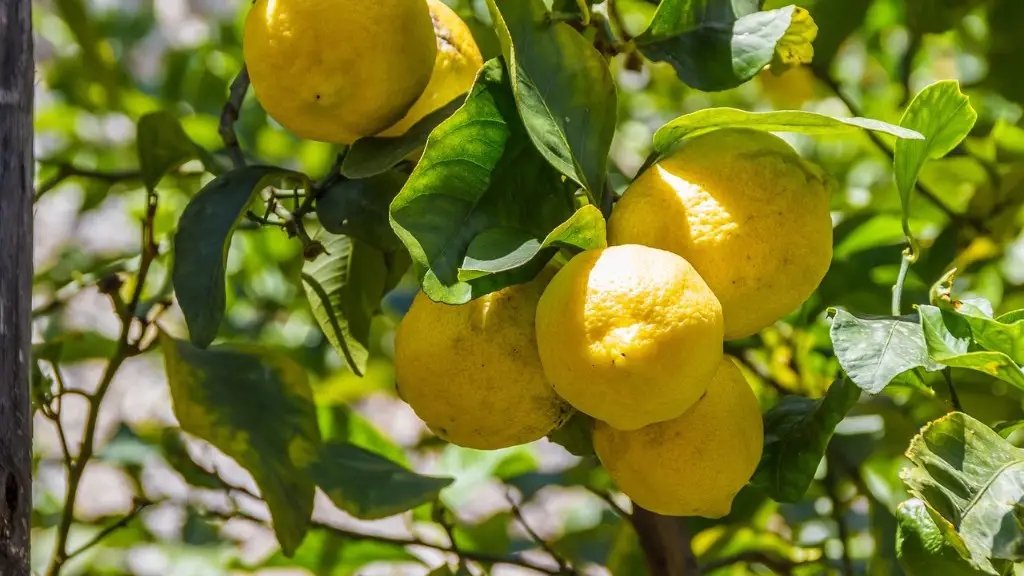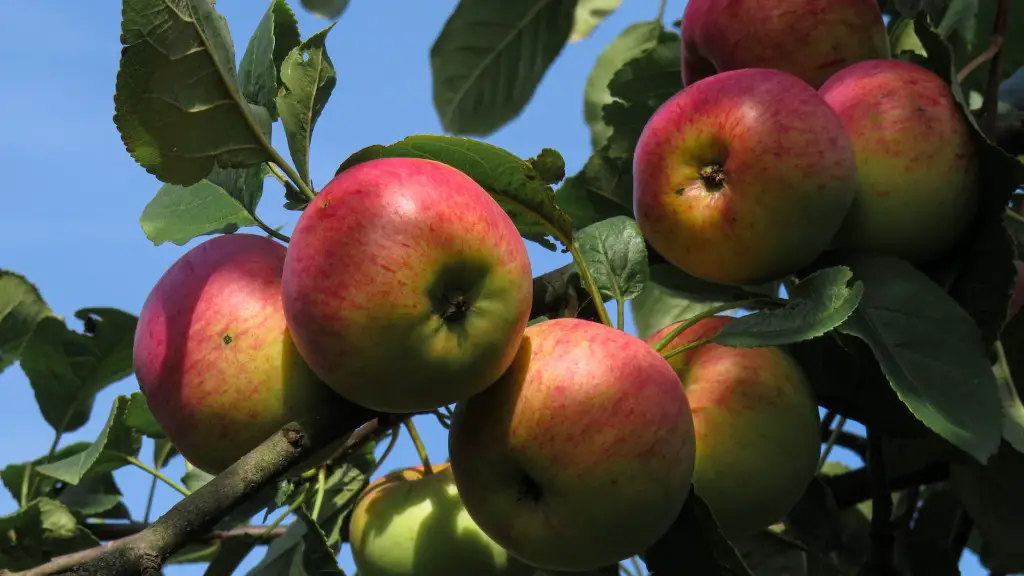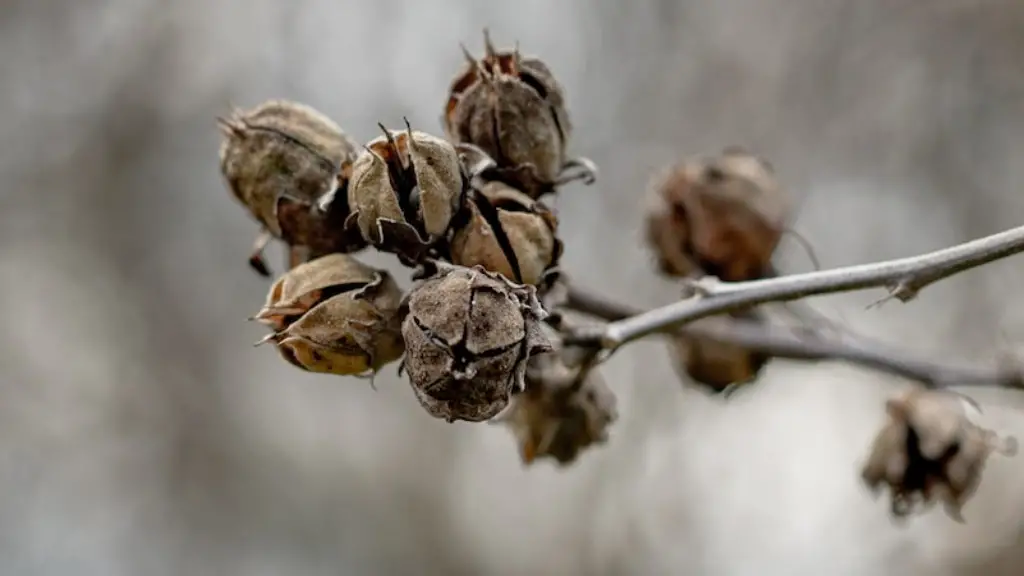Eureka lemon trees are a popular choice for growing in home gardens and landscapes due to their cold-hardiness and prolific fruit production. It is normal for a mature Eureka lemon tree to grow to 20-25 feet in height and spread to 10-15 feet in width, forming a beautiful canopy of foliage with fragrant white flowers and tart, juicy fruit. The amount a Eureka lemon tree will actually reach can vary depending on the soil, the climate, and the care the tree receives, but in general, a Eureka lemon tree will reach a sizeable size.
Eureka lemon trees should be planted in well-drained soil in a sunny, sheltered spot. Hot daytime temperatures, cool nighttime temperatures, and areas with strong winds should be avoided. When planted correctly, a Eureka lemon tree will reach full-size in five to seven years. In colder climates, the growth may slow down and the tree may remain smaller than its potential size.
Proper care is essential for a healthy Eureka lemon tree. Fertilization should be done twice a year, in spring and summer with a balanced citrus fertilizer. Watering should be done every other day in dry weather, and even more in extreme heat. Pruning should be done as needed, to keep the tree as healthy and productive as possible. Of course, pests and diseases should be monitored and controlled to keep the tree as healthy as possible. Careful attention will not only help the tree reach its full-size potential, but also to help it remain healthy.
Harvesting the fruit will help a Eureka lemon tree reach its full size potential as well. When the lemons are ripe and ready to be picked, they should be harvested promptly. Over-ripe fruits can cause the tree to drop its leaves and go into a dormant state, which can affect its growth. Regular harvesting helps the tree maintain its size and health, so it is important to pick the fruit in a timely manner.
Ultimately, a Eureka lemon tree can reach a sizable height and width, providing a beautiful canopy of fragrant white flowers and tart, juicy lemons. However, in order to reach its full-size potential and remain healthy, proper care and harvesting are needed. With these in place, a Eureka lemon tree can reach a full-size potential and remain strong and healthy for years to come.
Soil Requirements
When growing any plant, soil is the foundation upon which it will thrive or fail. For Eureka lemon trees, this is especially true. The soil should be well-drained, with a near-neutral pH of 6.0 to 7.0 for best results. Adding organic matter to the soil such as compost, manure, or leaf litter can help to keep the soil loose and provide the necessary nutrients for the tree. Amending the soil with peat or vermiculite can also be beneficial.
When planting, the hole should be twice the size of the root ball, deep enough to cover the roots but not so deep as to plant the root ball in a deep, water-filled hole. As a rule of thumb, the soil should be kept slightly moist, never dry, but never soggy either. Proper drainage is essential, so adding sand if needed to ensure proper runoff is a good idea. It is also important to water the tree regularly, but never to allow it to become waterlogged.
Providing the right soil for a Eureka lemon tree will help it reach its full-size potential and remain healthy. Make sure to research what type of soil your particular climate requires, and use the best soil you can find for the best outcome.
Climate Considerations
The climate in which a Eureka lemon tree will be grown will affect not only its growth but its overall health as well. In order for it to reach its full size, the tree will need an area with temperatures of 40 to 75 degrees Fahrenheit, and temperatures that remain relatively consistent. Hot daytime temperatures and cool nighttime temperatures should be avoided. Strong winds should also be avoided, as they can weaken and damage the tree.
In areas with colder temperatures, a Eureka lemon tree may reach a smaller size than potential and may enter into a dormant state. This is normal and seasonal, and the tree will usually begin to grow again in the spring. Protective summer covering may help the tree to survive in cold areas. Overall, the better the climate and conditions, the better the size and health of the tree will be.
In addition, Eureka lemon trees need full sun, such as 6-8 hours a day. The more sun the tree can get, the better. Too little sun can lead to weaker growth and less fruit production. While too much sun can cause leaf burn and other issues, with the proper care, such as weekly deep watering and tips for windproofing the tree, the tree should remain healthy and strong.
Pruning
Pruning a Eureka lemon tree is an important part of its care, as it helps to shape the tree and maintain its health. Pruning should be done yearly in late winter, to remove any dead wood, branches that cross or rub together, and any undesirable growth. This will help to keep the tree healthy and vigorous, and encourage better fruit production.
The young tree will only need minor pruning, such as removing a few branches that have crossed or rubbed and any dead wood, but as the tree matures, it should be pruned to maintain a balance between growth, airflow, and light. Generally, more pruning is needed in areas with more rain and humidity than those with dryer climates. Care should be taken not to prune too much, as cutting back too hard can cause shock and damage to the tree.
When pruning, it is important to use sharp pruning shears and dress the wounds with wound dressing. This will keep diseases and pests away and prevent rotting of the branches. Proper pruning and protection will help the tree reach its full-size potential and remain healthy for years to come.
Fertilization
Fertilization is an essential part of the care of a Eureka lemon tree. Regular and proper fertilization will help the tree to reach its full-size potential and provide prolific fruit production. The type of fertilizer used will depend on the soil and climate, so it is best to consult a local gardening expert to determine the best type of fertilizer to use.
It is best to use a balanced citrus fertilizer, such as one with equal parts of nitrogen, phosphorus and potassium. The fertilizer should be applied twice a year, in the spring and late summer, for best results. Apply the fertilizer at the base of the tree in a 3-4 foot diameter, with the directed amount on the fertilizer packaging. Avoid fertilizing in extreme heat, as the fertilizer may burn the roots of the tree.
When fertilizing, it’s best to avoid over-fertilizing and instead apply the fertilizer in smaller, more frequent doses. This will ensure the tree gets the nutrients it needs without burning. An additional application of a slow-release fertilizer during the growing season may be necessary in some cases.
Pest and Disease Management
Pests and diseases can be a problem for any citrus tree, and can cause stunted growth and fruit production. The most common pests and diseases of Eureka lemon trees are aphids, spider mites, scale, and various types of fungi. Controlling them is an important part of the tree’s care.
The safest and most effective way to manage pests and diseases is to use an Integrated Pest Management (IPM) program. Start by keeping the tree well-watered and fertilized, as this will help to keep it healthy. Monitor the tree for signs of infestation or disease, such as discolored or spotted leaves, or strange insects or insects eggs. Apply natural and safe pest control measures, such as neem oil or insecticidal soap, as needed. If the problem persists, consult a local gardening expert for assistance.
Overall, proper pest and disease management is essential for a healthy, productive Eureka lemon tree. With this in place, the tree can reach its full-size potential and provide delicious fruit year after year.
Harvesting
harvesting the fruit of a Eureka lemon tree is an important part of its maintenance. When the lemons are ripe and ready, they should be picked promptly. Over-ripe fruits can cause the tree to go into a dormant phase, which can affect its growth and health. Regularly harvesting the fruit will help to keep the tree as healthy and strong as possible.
When harvesting, use gloves to avoid cuts and scrapes, and handle the fruit gently to avoid bruising the skin. Harvesting at the right time and in the right way will help the tree reach its full size potential and remain healthy.Additionally, the lemons can be used immediately or stored in the refrigerator for up to two weeks.
Conclusion
Eureka lemon trees can reach a sizable height and width, providing a beautiful canopy of fragrant white flowers and tart, juicy fruit. However, in order to reach its full-size potential and remain healthy, proper soil, climate, pruning, fertilization, pest and disease management, and harvesting are all essential factors. With these in place, a Eureka lemon tree can reach its full potential and flourish for years to come.



